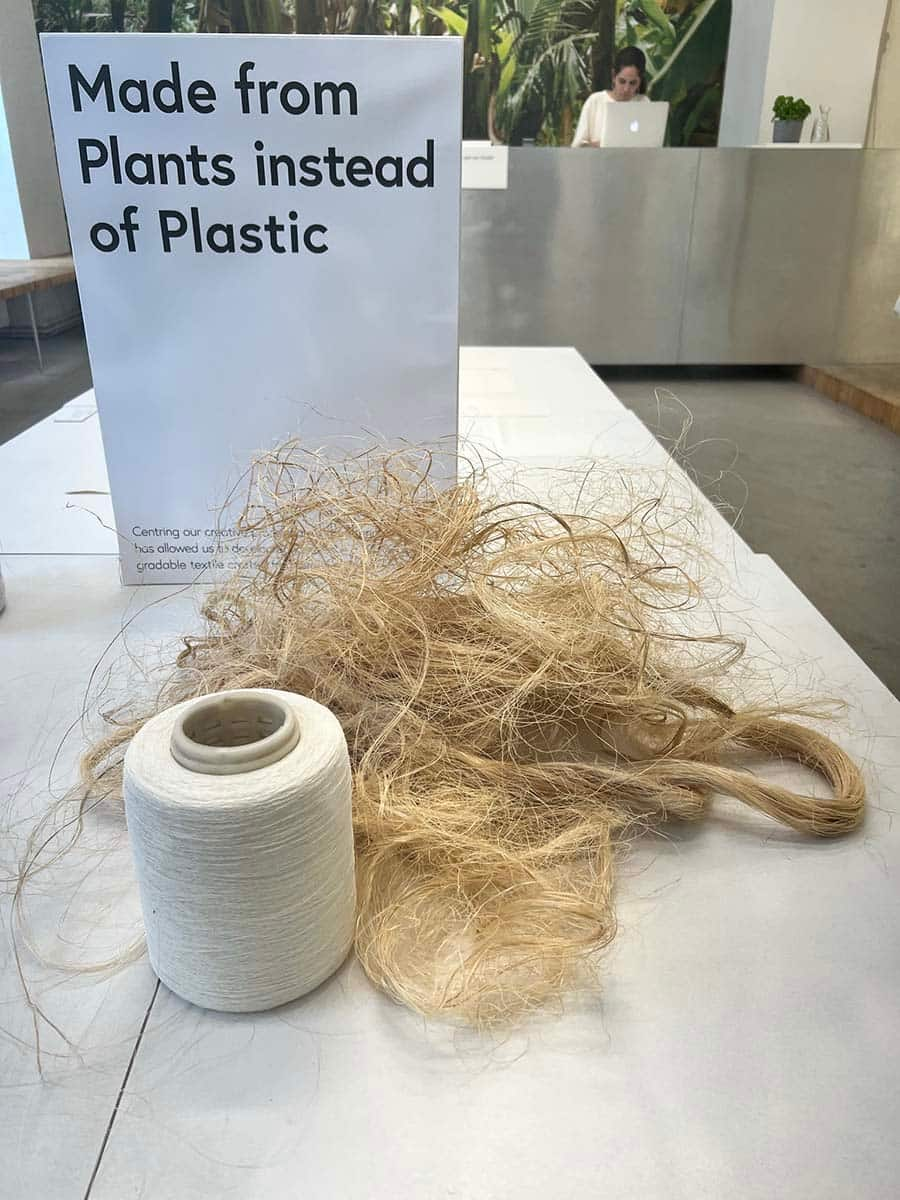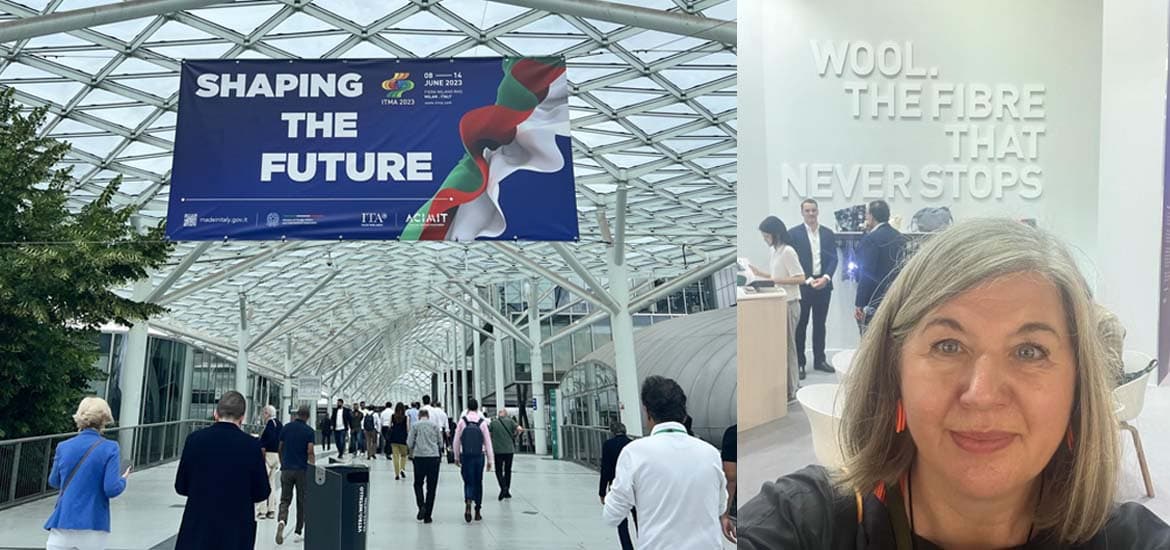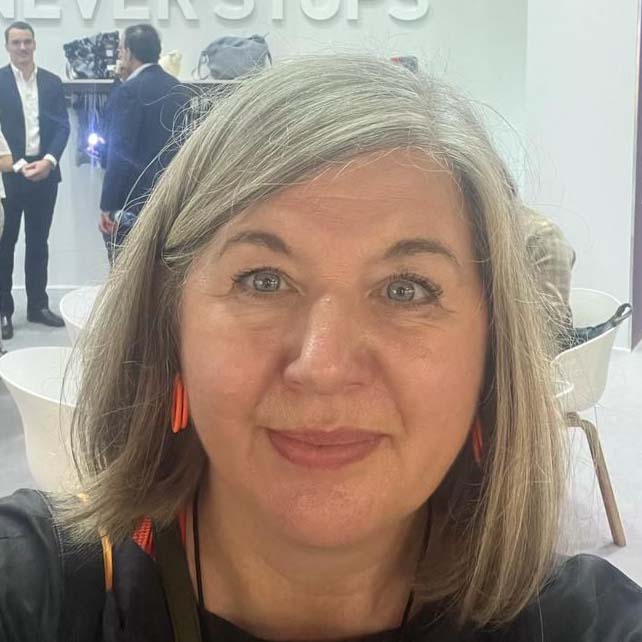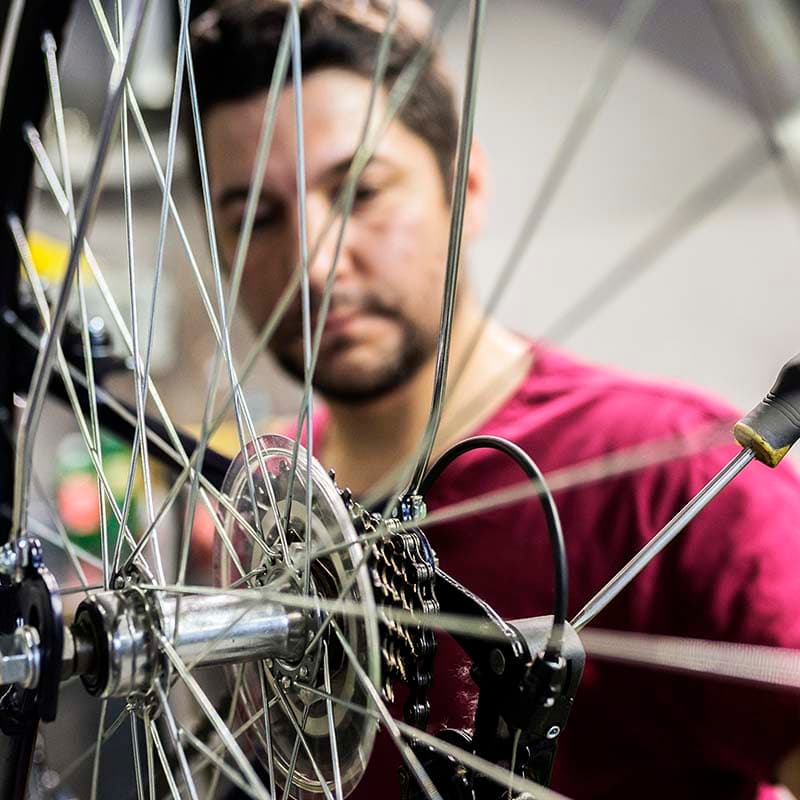
A global view to inspire Scotland's textile sector
What is the global textile industry doing to advance circularity and zero waste?
These are two pressing issues for an industry that, according to the UNEP, ‘emits 2-8% of the world’s greenhouse gases, uses the equivalent of 86 million Olympic-sized swimming pools of natural water resources, and is responsible for 9% of microplastic pollution to our oceans.’ (2023)1.
Transforming the world of textiles
ITMA is a vast exhibition of the latest technological advances in raw material processing, yarn spinning, dyeing, textile weaving, knitting, bonding and garment construction. The conference theme was "Transforming the World of Textiles" and I found my way to the Innovation Hub, to meet some of the most advanced technology companies addressing my question.
Zero Waste Scotland's Circular Textile Fund was firmly in my mind as I window-shopped for collaborators, suppliers and textile technology developments that could help Scotland reduce the 32% of carbon emissions from household waste, caused by the 4% of post-consumer textiles that are thrown away2.
I also managed to listen in on a presentation by Lutz Walter, Secretary General of the European Technology Platform for the Future of Textiles and Clothing (Textile ETP) at the Innovator Xchange on Advanced Materials Forum. Lutz outlined three key critical areas for the future of low carbon textile circularity.
Using these three areas he highlighted, here are some key insights from ITMA to inspire Scotland’s textile sector.
Transitioning away from fossil fuel-based fibre
Fibre is the critical base for the development and performance of any textile.
Since 1941, fossil fuel-based fibres have grown from being an innovative post-WWII mass manufacturing solution to a global nightmare, where around 60% of textile products are polymer based3. Approximately ‘342 million’ oil barrels are used annually to create plastic-based clothing4.
ITMA exhibitors, presenting alternative fibre solutions were split into three categories – regenerative plant fibre (banana, cotton, hemp), regenerative animal fibres (wool) and bio-synthetic (cornstarch and plant-based).
Noosa has developed Noocyle® technology, a cornstarch-based fibre, developed using traditional bio-synthetic processes of mixing cornstarch with lactic acid. This produces a fibrous material that can be spun into a recyclable yarn.

Whilst not exhibiting at ITMA, I met Bananatex©’s Retail Manager, Alexandra Leitner, who explained they had received delivery of their first banana fibre apparel garments, unisex t-shirts, a welcome alternative to water-intensive cotton fibres.
Reducing energy footprint
Lutz, highlighted that 60-70% of a textile product’s carbon footprint is attributed to the production process and there is a need for a rapid transition to clean energy technologies. Most textile businesses in Scotland are micro and SMEs, using traditional processes with strictly controlled energy and effluent emissions.
This is not the case in the major textile-producing countries, such as Bangladesh, China and India, where air and water pollution are as environmentally challenging as they were in the UK at the height of the industrial revolution.
Scotland consumes 38% more per person than the global average including textile-related products5. There is an urgent need for Scotland to use our current renewable energy innovations, such as wind and hydropower, to work with global partners to address cleantech energy, that will reduce the carbon emissions within clothing imported into the UK and Scotland.
Scotland must use current renewable energy innovations and to work with global partners to reduce the carbon emissions within clothing imported into the UK and Scotland.
Share on
Fully automated product manufacturing
Lutz, explained that all fashion is made on forecast value chains. These are long and means if a company misses the forecast a lot of pre-consumer unsold stock is created.
For this to change, he explained, the industry needs to produce on demand and to do so the clothing industry needs to transition to fully automated systems. This would also help to reduce up to 25% of the waste produced during the traditional cut-and-sew manufacturing processes6.
Technology on display, already used in Scotland’s traditional knitting industry, was the Japanese knitting machine manufacturer, Shima Seiki, at the forefront of zero-waste knitting Wholegarment® zero waste technology, available since 1985.
Talking to Shima, Sales Manager for Europe, Scott Hamilton, based in Hawick, I was excited to find out that they offer training courses to anyone willing to learn flatbed knitting from the beginning and progressing to Wholegarment® technology. This is an exciting opportunity for Scotland’s textile sector, which according to the Textile Industry Leadership Group for Scotland is urgently in need of technically skilled workers. The next course starts in September in Hawick.

Leaving ITMA, and reflecting on my question, I was inspired, excited and optimistic that the solutions are there to transition to a low-carbon, circular textile sector.
International collaboration is key for Scotland, as a country that has always punched above our weight in the global textile market. After all, the industrial revolution began with James Watt’s steam engine condenser technology in Glasgow, in 1765, which powered the weaving looms of the time and accelerated global production by selling the technology to the rest of the world. I’d like to think, if Watt was alive, he would be centre stage at ITMA, with a technology to reverse the challenges he has posthumously enabled.
The next ITMA exhibition is in 2027. My hope is that, by then, the new Watt’s of Scotland - textile innovators, supported by the Circular Textile Fund and key partners - will be showcasing, and selling to the world, Scotland’s solutions for the transition to cleaner, low-carbon, textile technologies.
- 1. United Nations Environment Programme. (2023) Sustainability and Circularity in the Textile Value Chain A GLOBAL ROADMAP. [Online]
- 2. Zero Waste Scotland. (2023) The Carbon Footprint of Scotland’s Household Waste. 2021 Household Carbon Metric Brief. [Online]
- 3. Textile Exchange. (2022) Preferred Fibre & Materials Market Report. [Online]
- 4. Ellen MacArthur Foundation. (2018) A New Textiles Economy: Redesigning fashion’s future. [Online]
- 5. Zero Waste Scotland (2021) Technical Report- Material Flow Accounts (MFA). [Online]
- 6. Ellen MacArthur Foundation. (2018) A New Textiles Economy: Redesigning fashion’s future. [Online]




